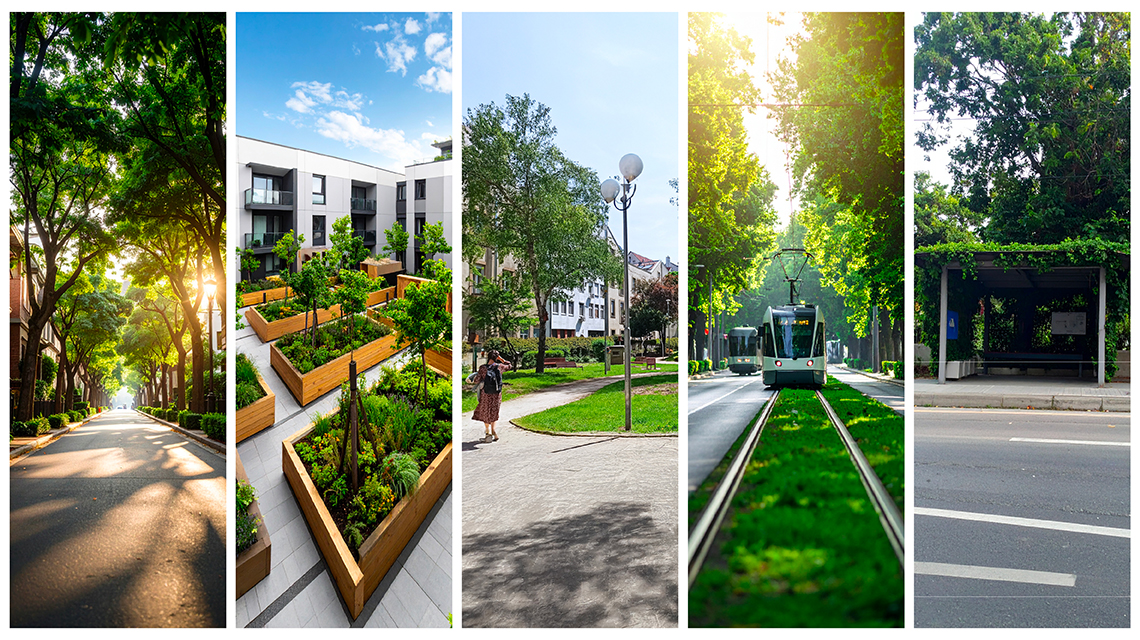Italian National Agency for New Technologies, Energy and Sustainable Economic Development

Environment: 25 green solutions to reduce the urban heat islands
From urban microforests to green shelters, from “pocket” parks to green furniture: these are some of the 25 nature-based solutions identified by ENEA to reduce extreme heat, with several co-benefits including improved air quality, biodiversity, and citizens’ physical and mental well-being. This initiative is part of the project “Climate Adaptation – The Urban Heat Island Effect in the City of Rome”, funded by the European Union via the Technical Support Instrument”, managed by the Reform and Investment Task Force, involving ENEA, Roma Tre University, the Ecologic Institute in Berlin, and PricewaterhouseCoopers – PwC Italy (coordinator).
The project specifically aims to support the City of Rome in identifying the most suitable solutions to tackle so-called “heat islands” in Municipalities I – between the historic center and the Vatican City – and V – in the eastern area, between via Tiburtina and via Casilina. These areas are considered more vulnerable and at higher risk due to high temperatures.
The urban heat island phenomenon occurs when the air temperature is higher in an urban area than in surrounding areas, and this temperature difference is directly attributable to urbanization: the replacement of natural soil cover – vegetation – with inert materials such as asphalt and concrete, which heat up faster and release heat more slowly, alters the city’s energy balance.
Thanks to the collaboration with Roma Tre University and the direct involvement of citizens, ENEA has adapted the solutions to the local context, also integrating systems for rainwater collection and reuse for irrigation, in a circular economy perspective.
In addition to urban forests, tree-lined avenues, parks and gardens, green roofs and walls – all effective in reducing temperatures but challenging to implement in a densely built and historically rich city like Rome – ENEA has also focused on innovative, flexible, scalable, adaptable, and multifunctional interventions, including:
- Green shelters at bus and tram stops that cool the air through shading and the evapotranspiration of the plants, making them more efficient in improving the microclimate than regular “grey” shelters;
- Vegetated street furniture, permeable pavements, and green tramways, which turn the space between rails into ecological corridors that promote rainwater infiltration and plant growth;
- Pocket parks and microforests that create green oases even in small marginal spaces, offering “cool islands” where citizens and tourists can find relief from summer heat.
The project will provide the City of Rome with a solid technical-scientific ground for planning future interventions in the selected areas.
“These solutions not only lower the air temperature but also enhance citizens' physical and mental well-being, increase biodiversity, and foster urban resilience,” explains Elisabetta Salvatori, Head of the Section Integrated and Nature-Based Solutions for Urban Regeneration at ENEA. “The urban heat island effect directly diminishes citizens’ well-being during summer and can exacerbate the consequences of increasingly frequent heat waves due to ongoing climate change, leading to higher mortality and morbidity, especially among vulnerable populations such as the elderly or chronically ill,” Salvatori adds. “For this reason, it is essential to implement these interventions by adapting them to the local ecological, socio-economic and urban planning context.”
To promote climate adaptation and maximize ecosystem services, the project also includes training activities for local administrators, aimed at strengthening skills in urban green management and promoting new green jobs for the sustainable regeneration of cities in the climate change era.
“Training is crucial because nature-based solutions, to be effective, must be designed, maintained and managed according to ecological principles, using local plant species with low allergenic potential, and applying the ‘right tree in the right place’ principle,” concludes Salvatori.
The project aligns with the new EU Nature Restoration Law, which requires member States to prevent any net loss of urban green spaces and to increase them, ensuring at least 10% tree canopy cover in every city by 2030.
Graphic – 25 Nature-Based Solutions to reduce the Urban Heat Island Effect:
- Street trees
- Urban forests
- Pocket parks
- Urban microforests
- Green parking lots
- Green tram tracks, road margins and traffic corridors
- Green shelters at bus and tram stops
- Medium and large urban parks
- Tree pits for water management and cooling
- Vegetated street furniture
- Vegetated pergolas
- Community gardens
- Mobile urban gardens or allotments
- Grow tiles for horizontal or vertical surfaces
- Mobile green living rooms for public spaces
- Green roofs
- Green walls
- Green façades
- Façade gardens
- Rain gardens
- Bisowales
- Green barriers
- Retention basins
- Infiltration basins
- Green belts
